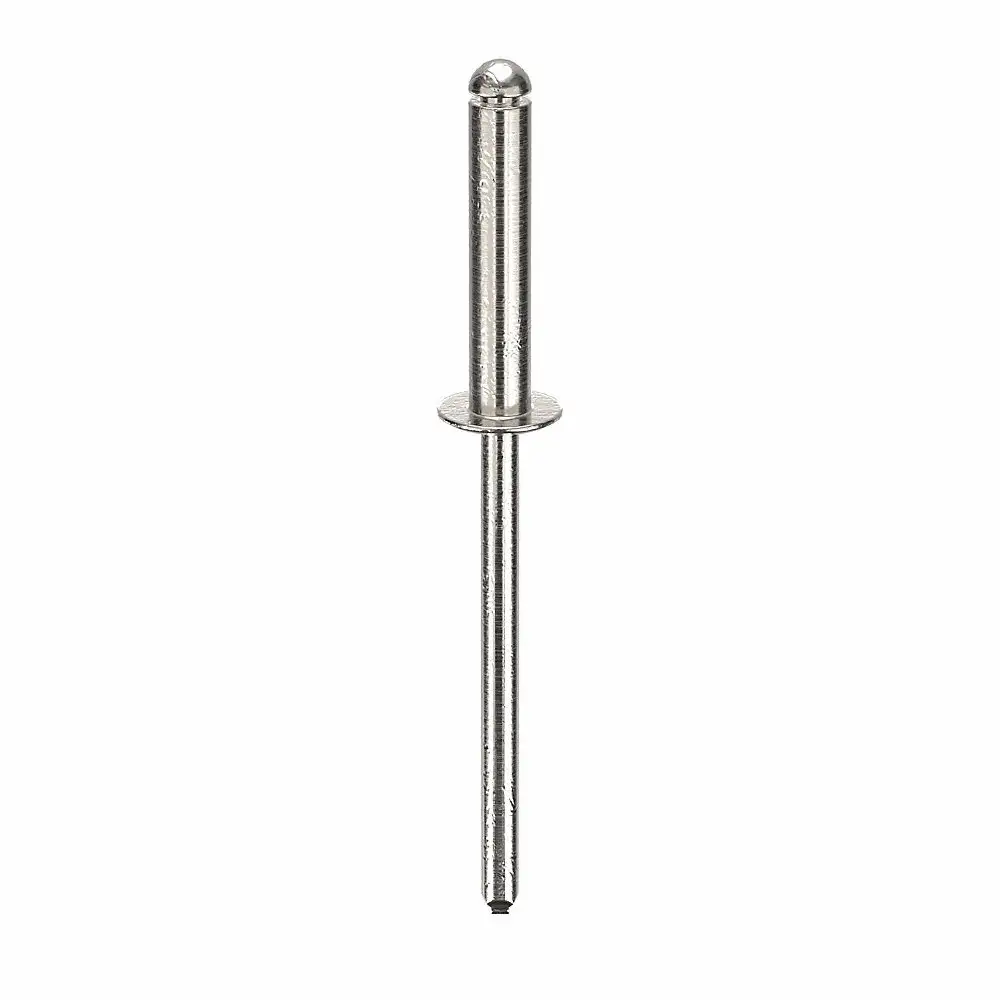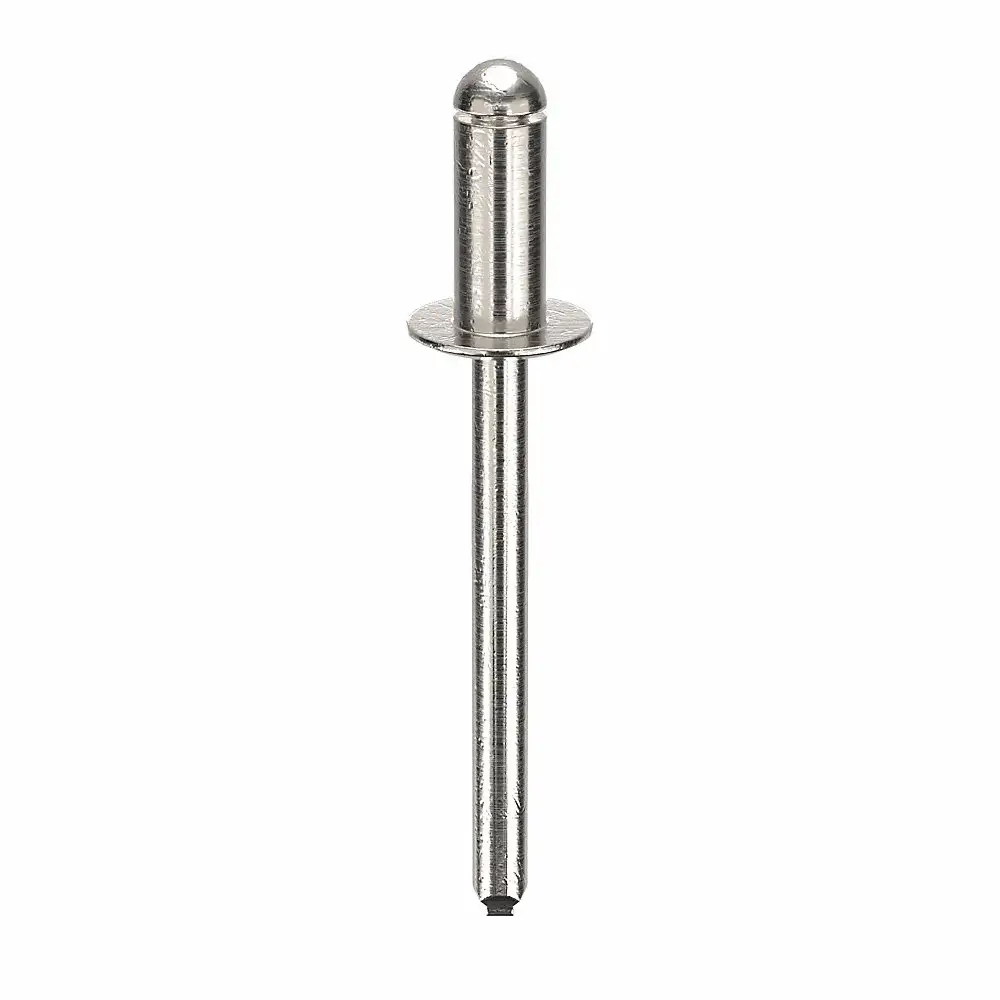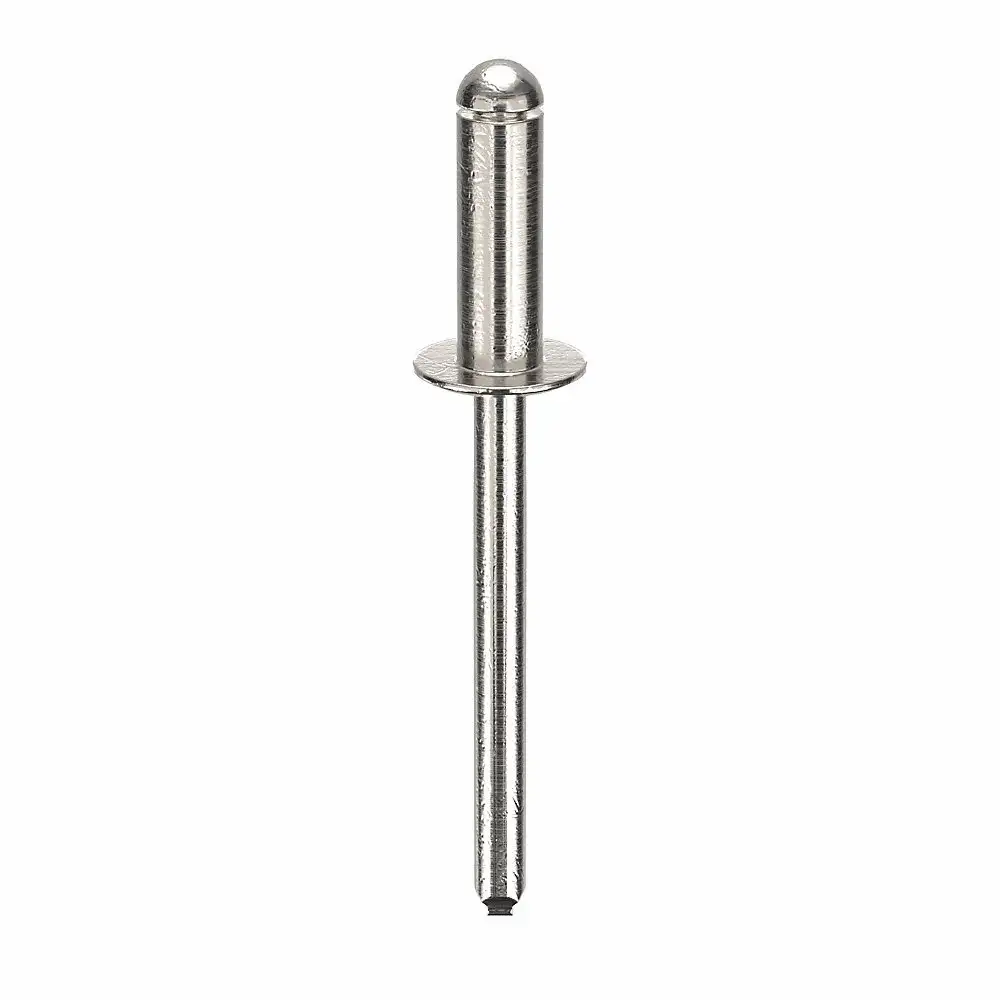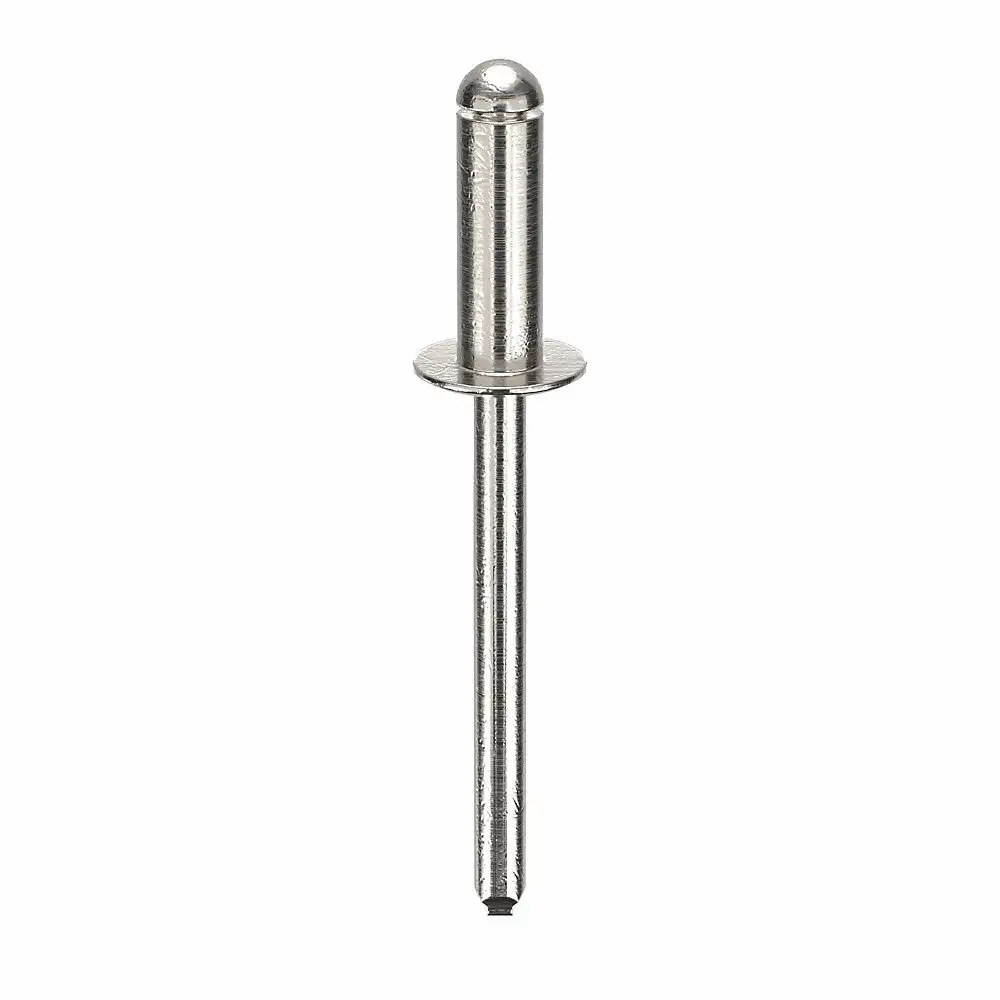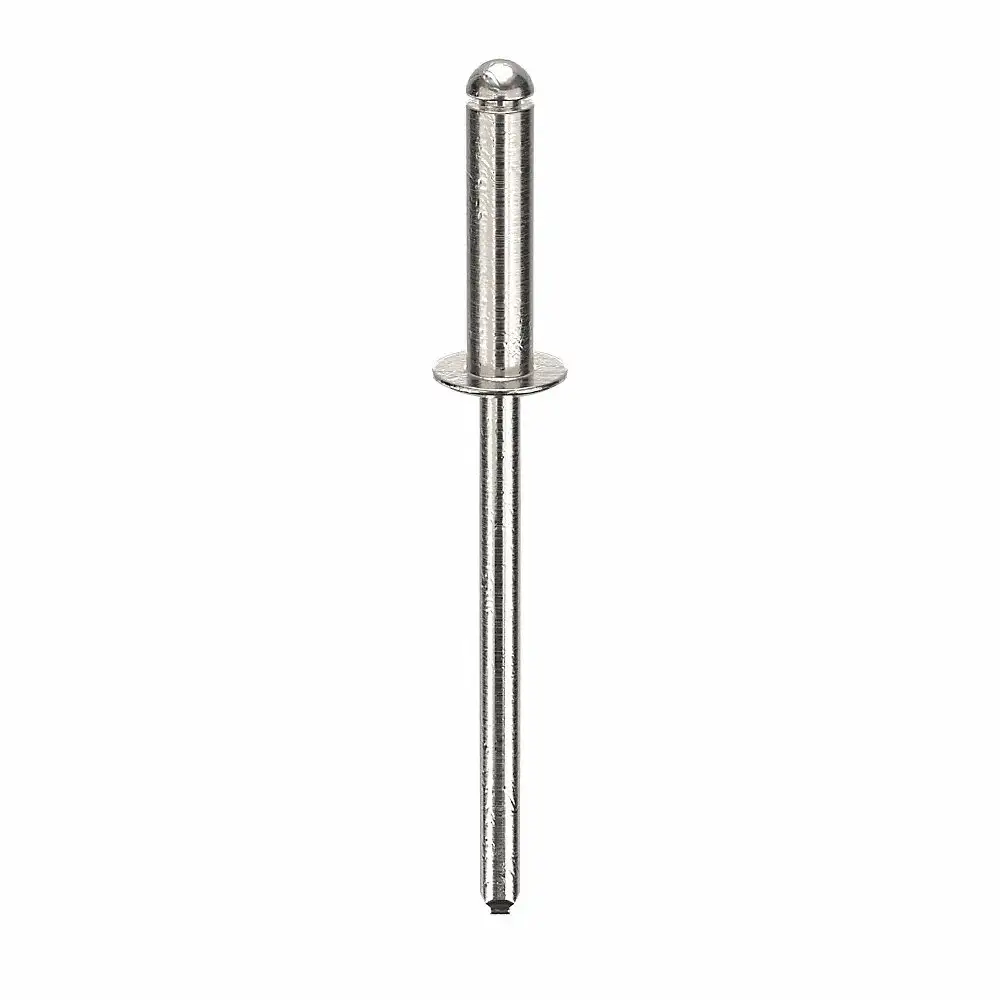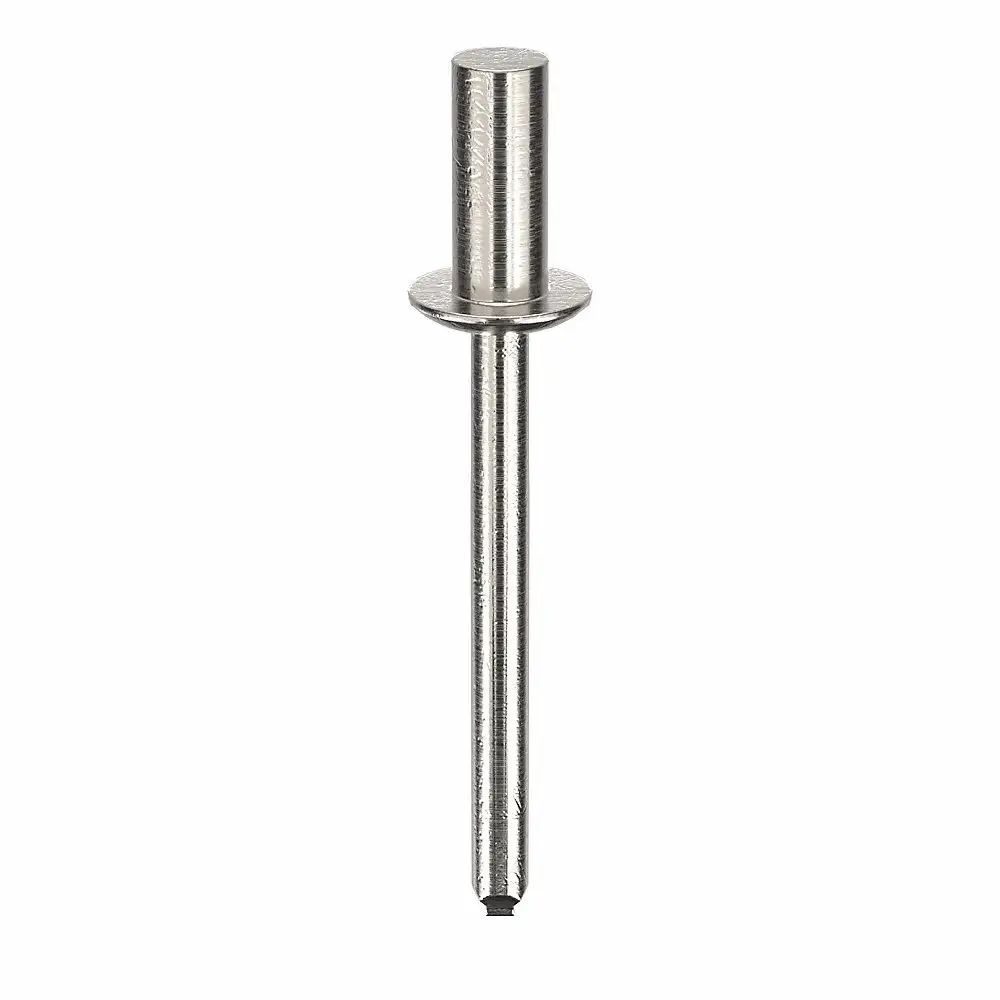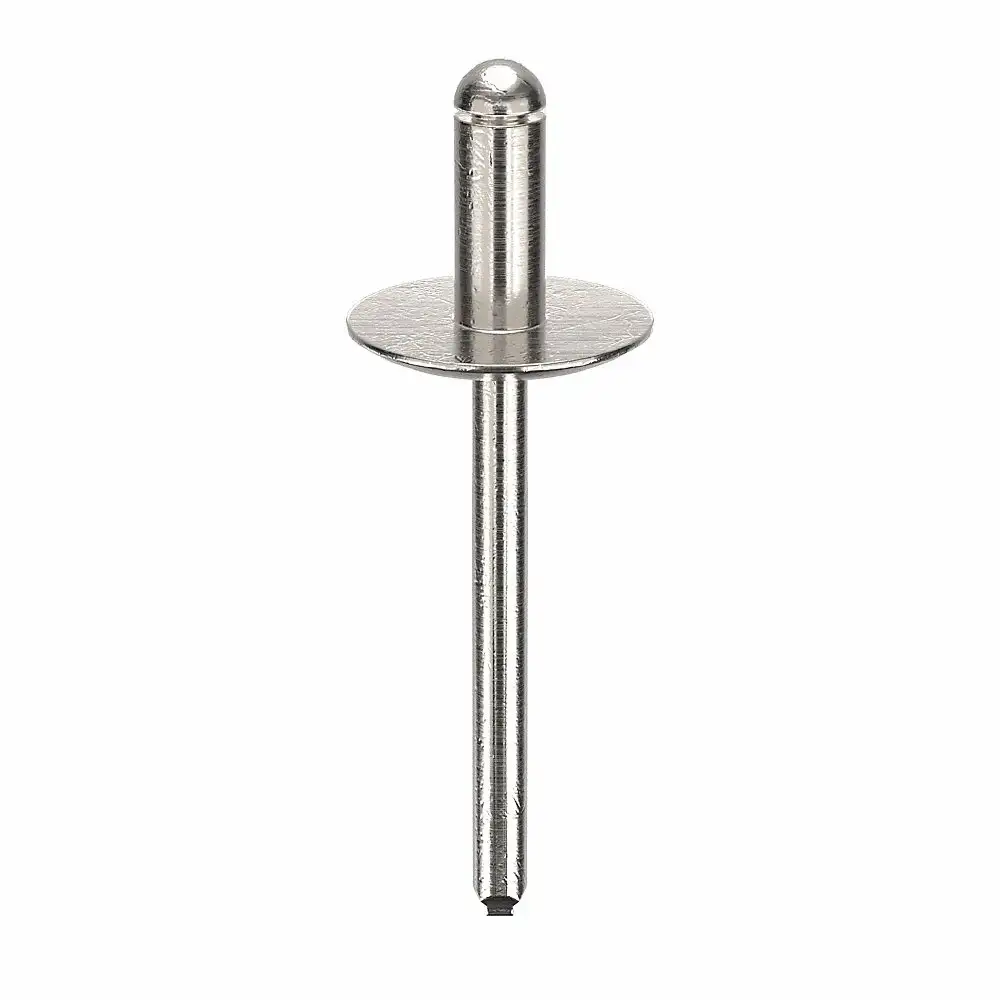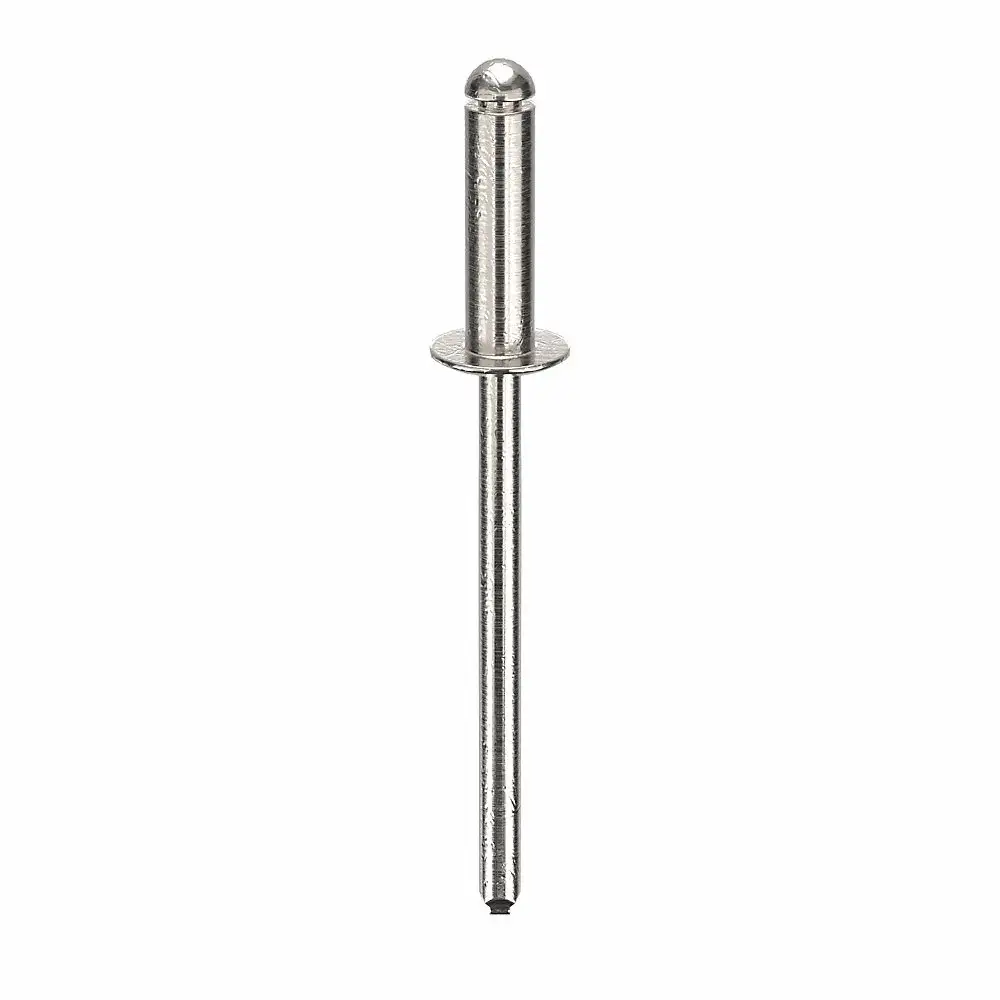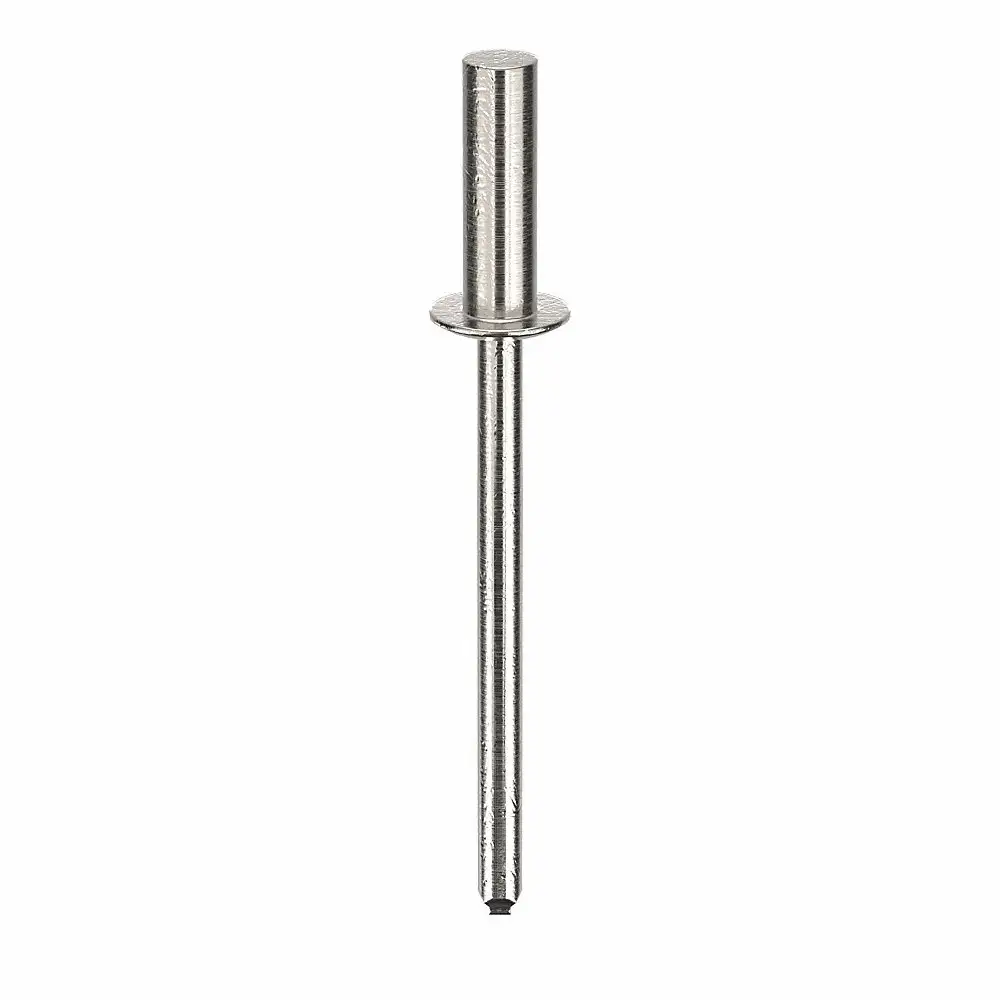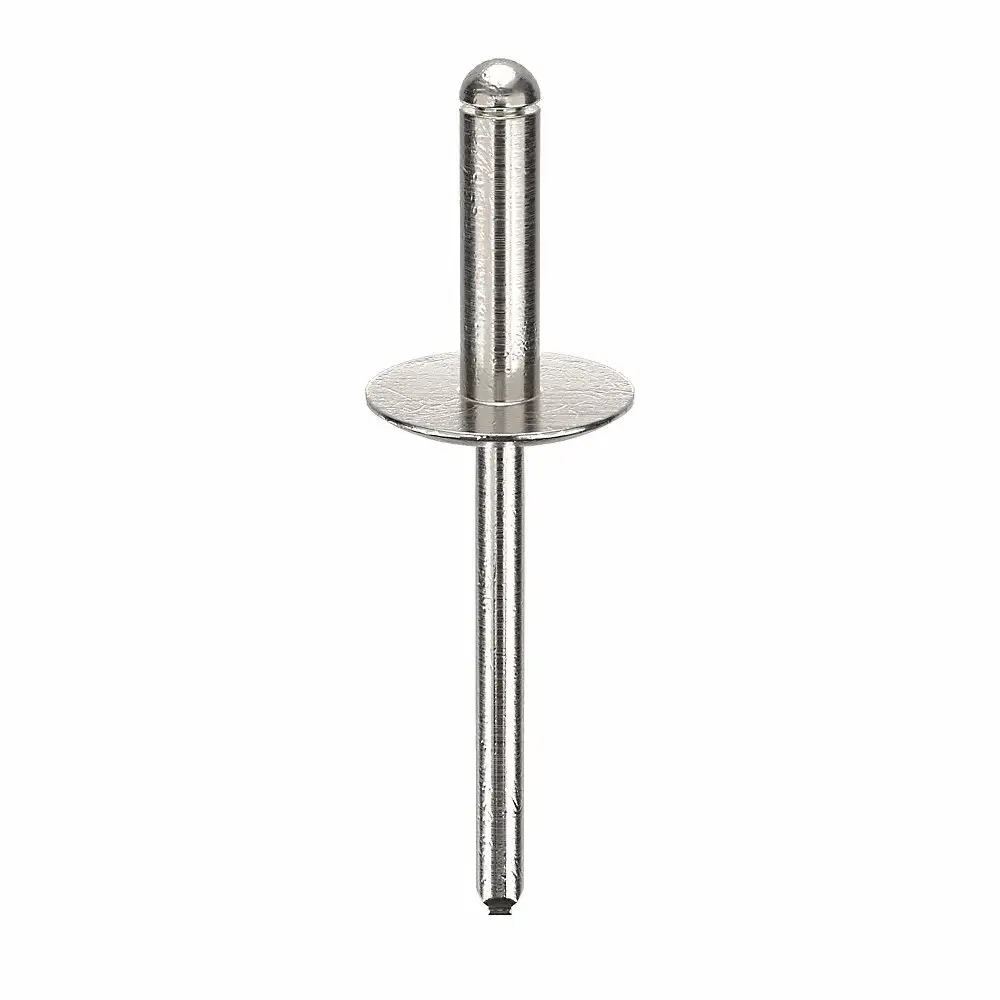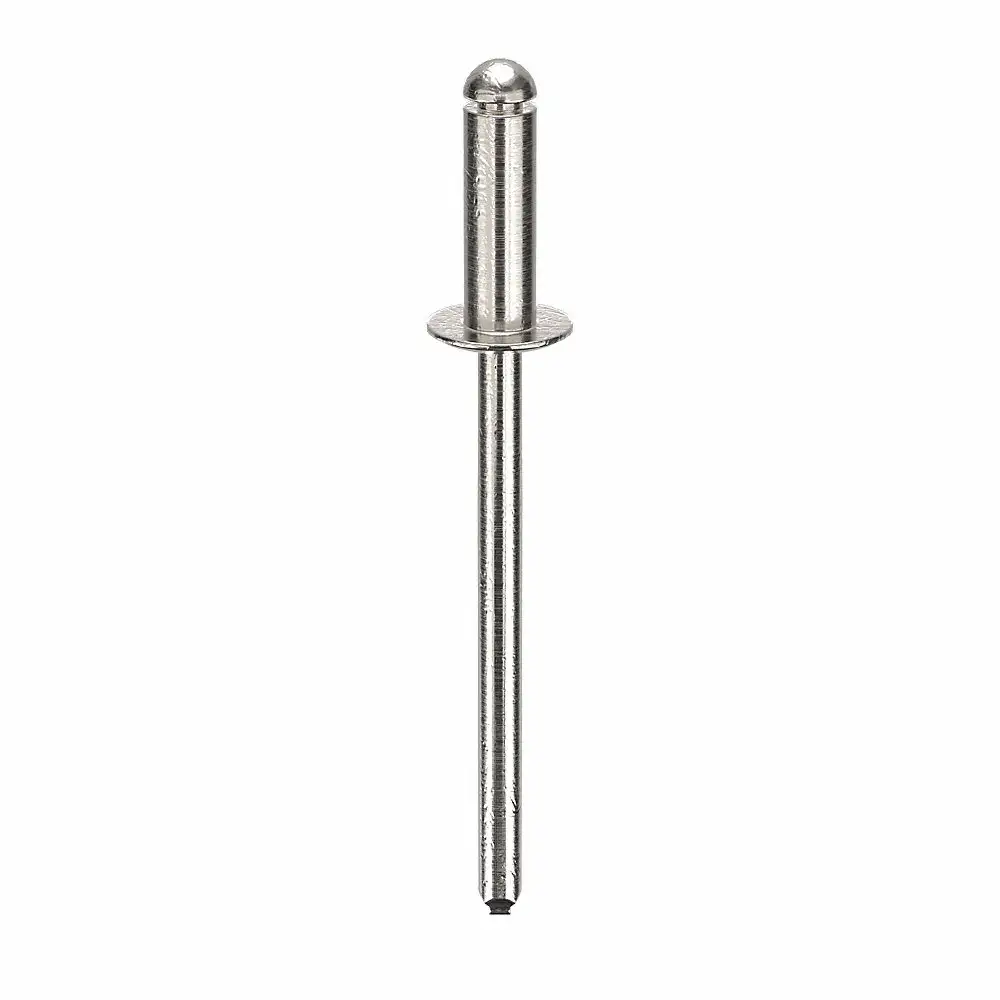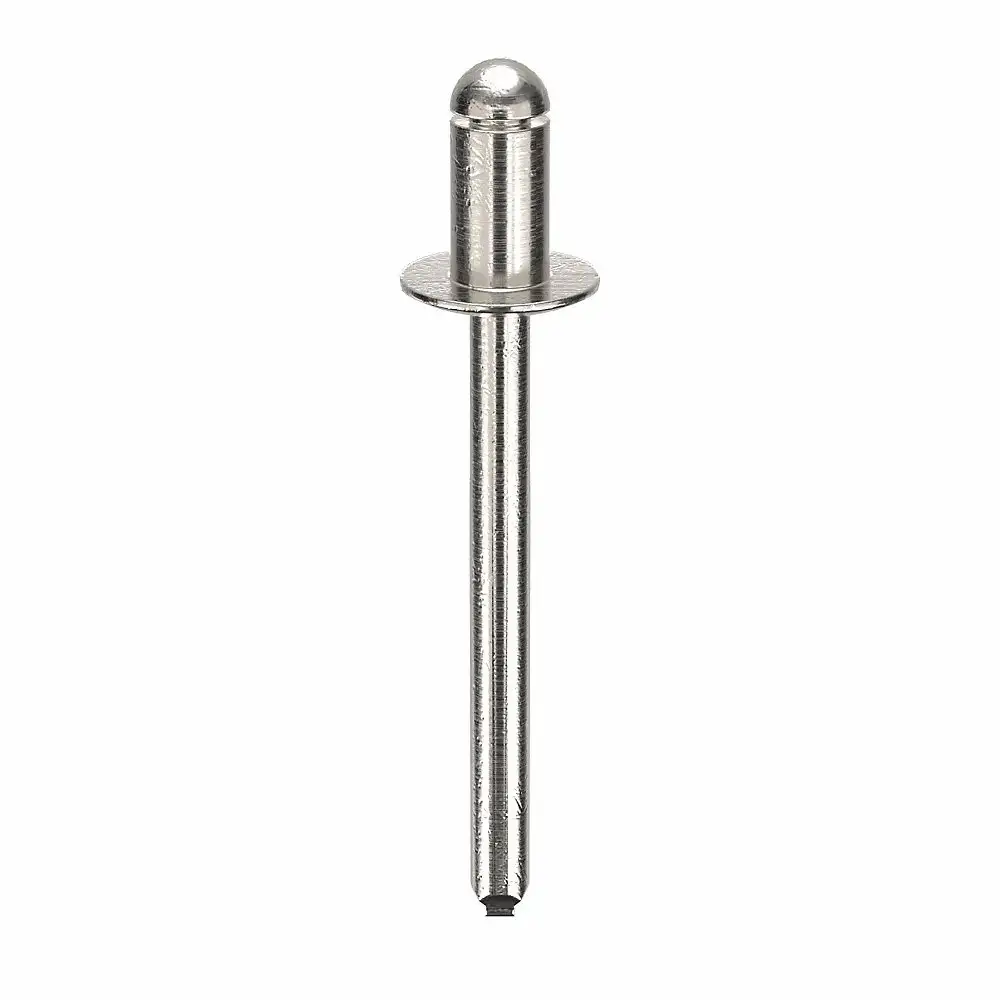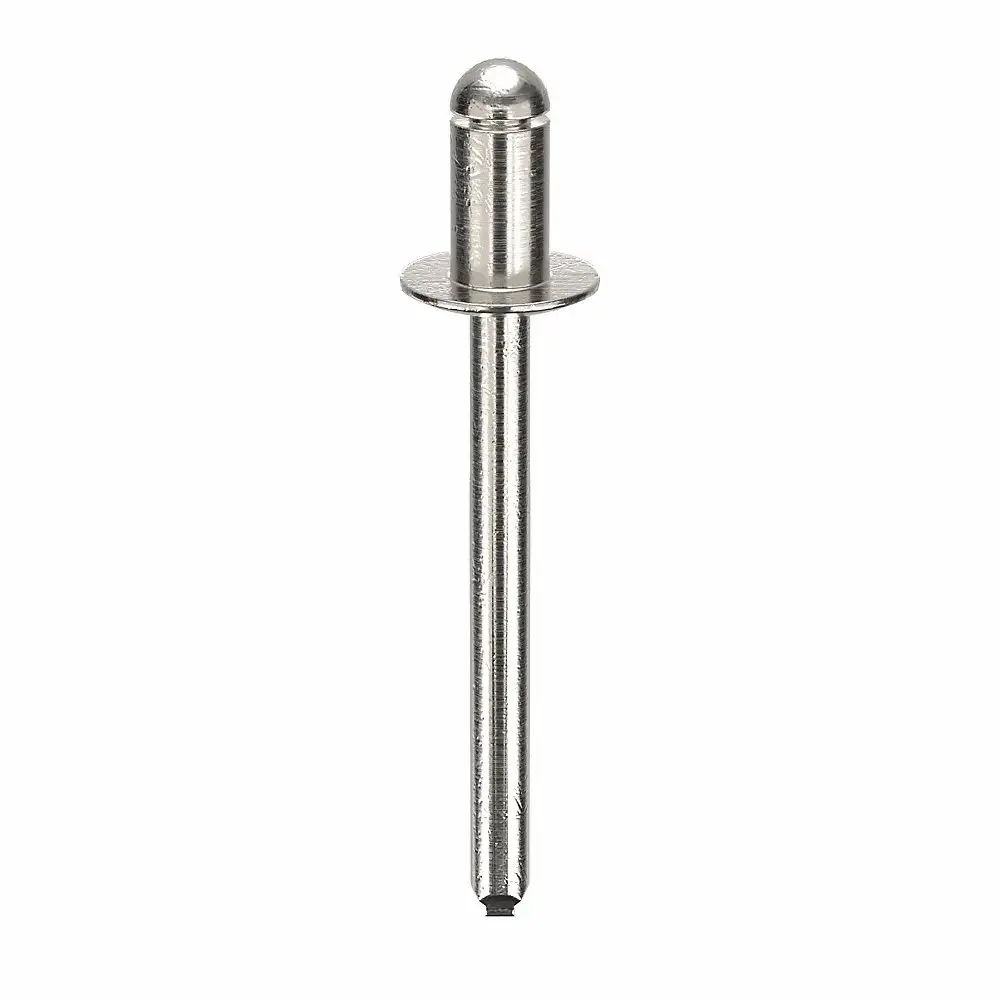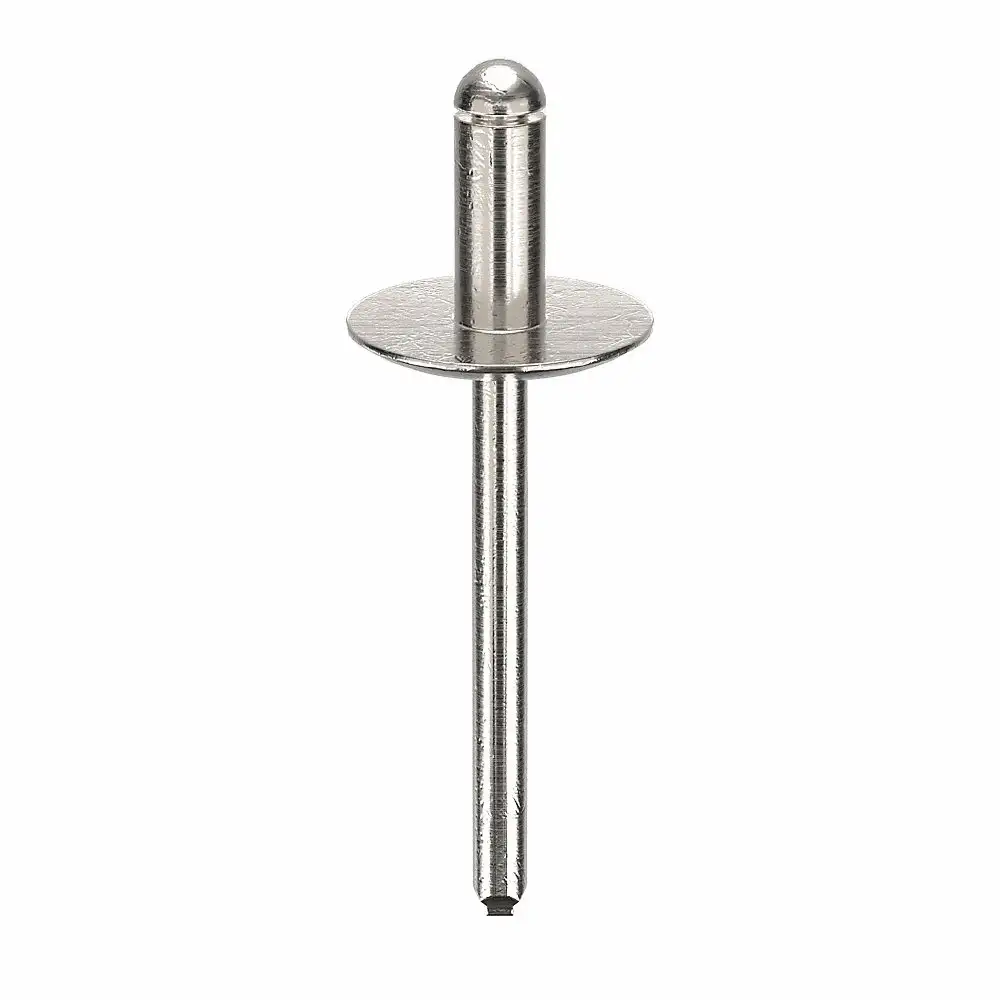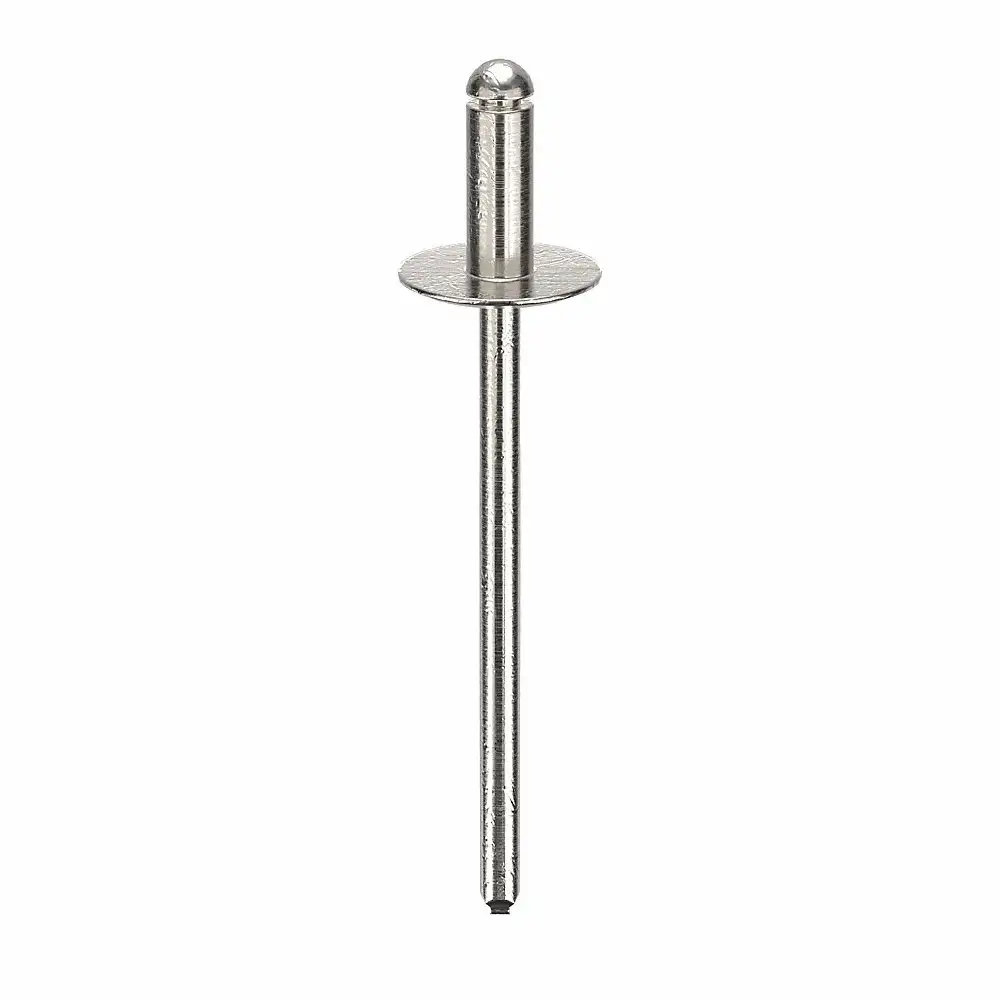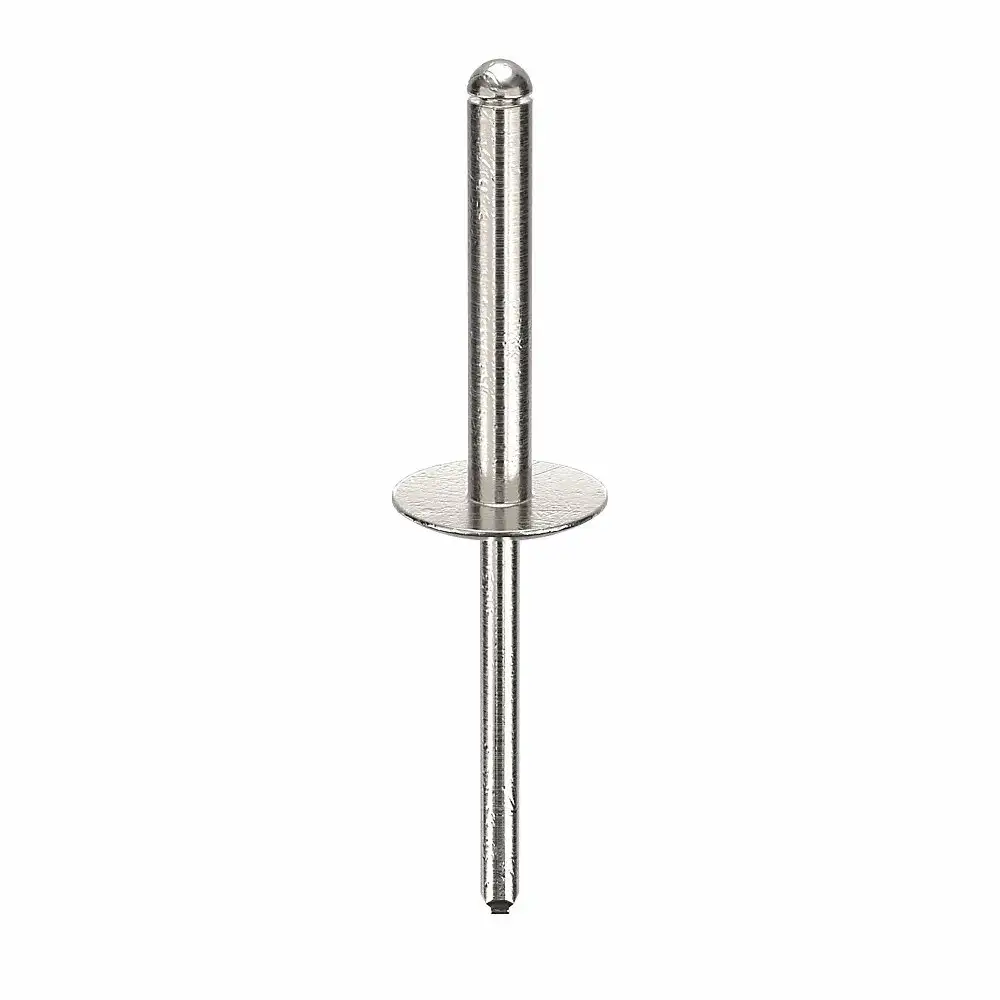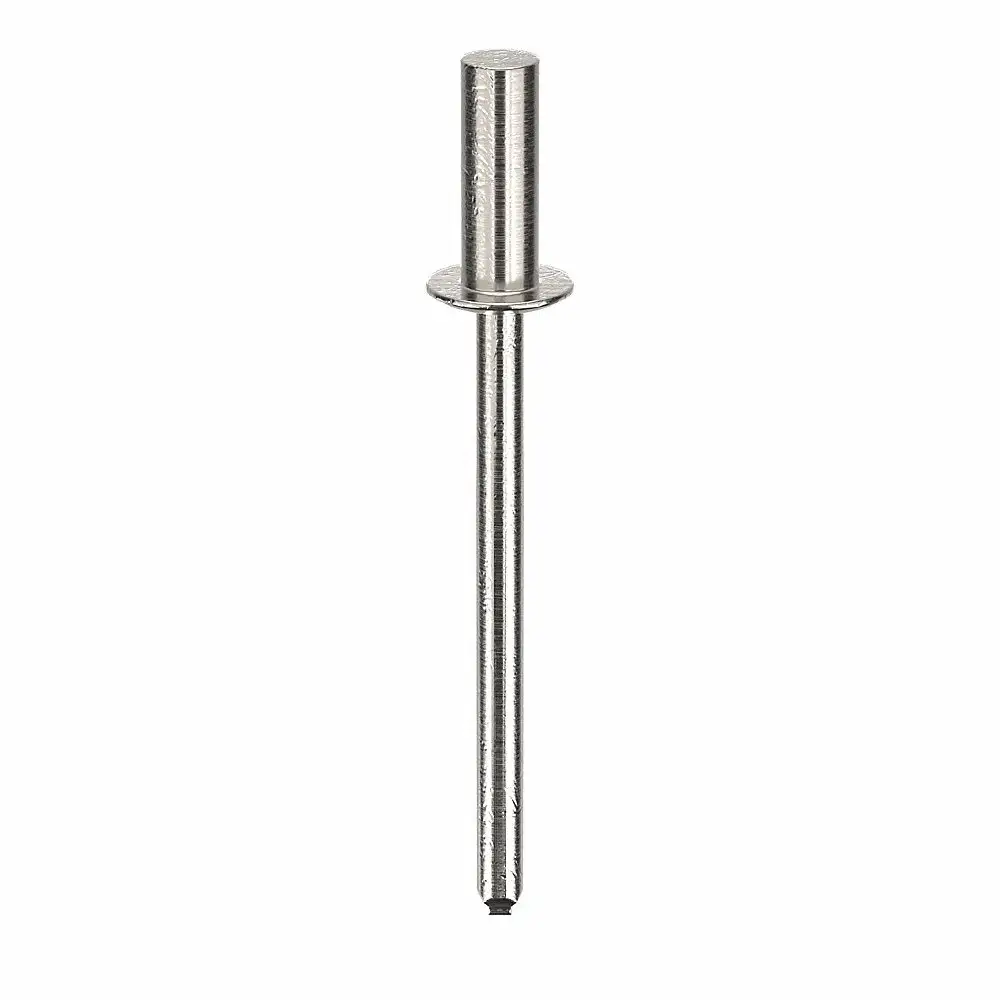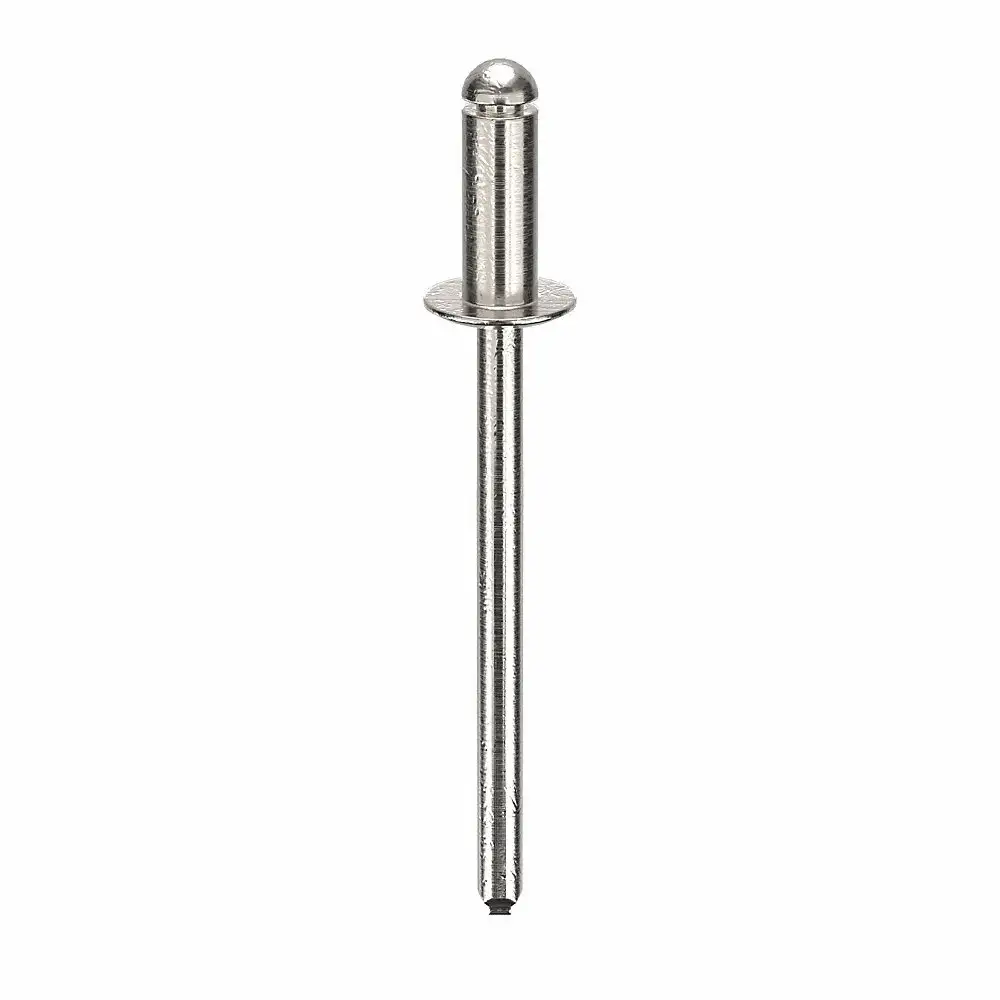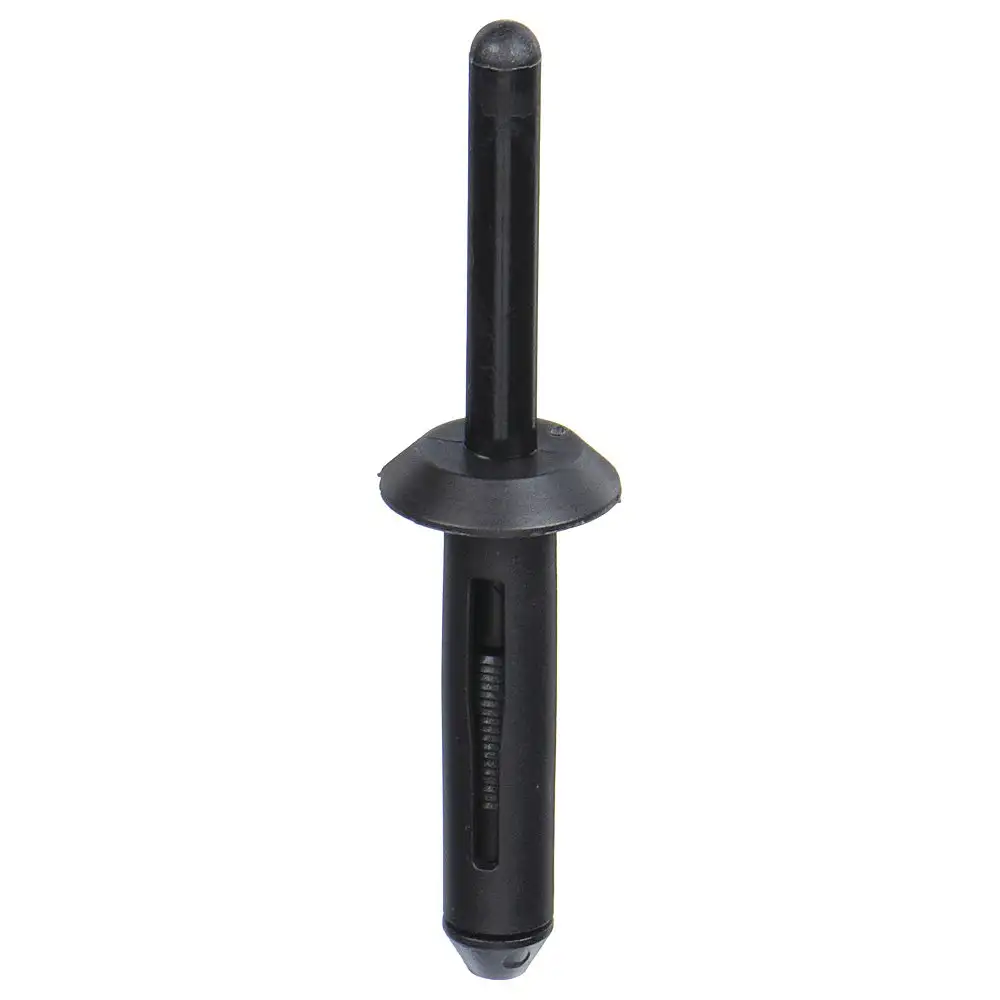Pop blind rivets or break stem rivets are ideal for fastening two different or same materials in applications where users can not access the rear (blind) end of the joint. They are ideal for... Read More
Pop blind rivets or break stem rivets are ideal for fastening two different or same materials in applications where users can not access the rear (blind) end of the joint. They are ideal for assembling applications of small electronic components structural beams and automobiles. These pop rivets consist of a mandrel or stem and a rivet body. The rivet body is fastened to the material whereas the mandrel is used to install the rivet by following simple steps. Firstly, a riveting tool is used to insert the rivets inside holes in the materials to be joined. Then the tool draws the mandrel against the rivet hat to cause the rivet body at the blind end to deform and provide clamping / fastening force at the joint. Once enough clamping force / pressure is put on the material joint, the mandrel snaps at a designed fault location with a unique 'pop' sound. After ensuring the proper installation of the rivet, the mandrel can now be discarded. One of the many advantages of rivets is that they can never be over or under-torqued unlike other fasteners. Open-end rivets depend on the mandrel's balled end pushing into the hat / rivet body for installation. Closed-end rivets have a sealed end for preventing the installed rivet from getting exposed to liquids or vapours. Domed head rivets provide a rounded & exposed look when finished. A large flange in a blind rivet features a wide hat for distributing surface pressure and preventing pull-throughs. Countersunk heads install flush on the surface for a uniform look. Read Less
 £ GBPChange Country
£ GBPChange Country